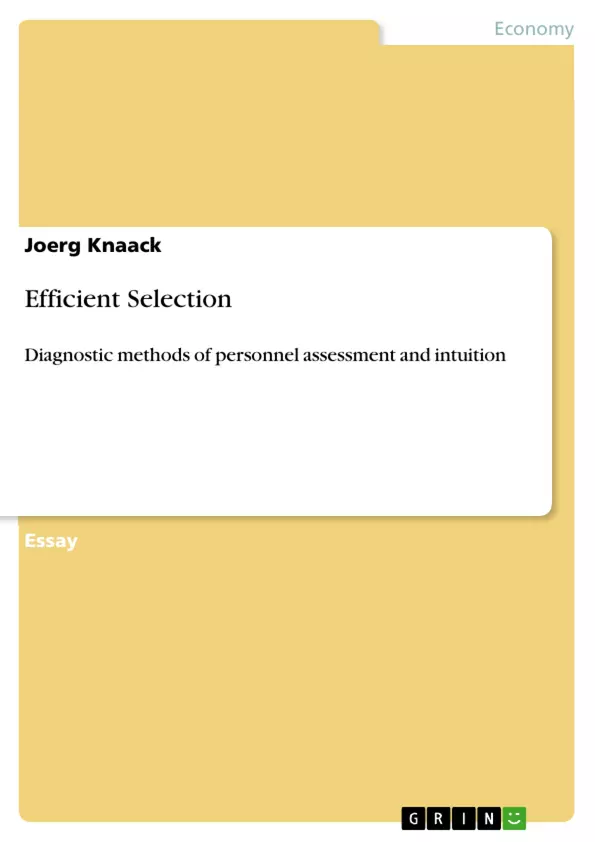„All of our insights start with a feeling.“ (da Vinci)
To analyse and reflect our decision making process continuously is one of the advices, which Nobel Laureate Daniel Kahneman devised from his extensive research. The question remains how to achieve reliable predictions about professional success of a certain executive. A feasible, successful method can be found in evidence-based personnel selection, which shall be introduced in detail in the following analysis.
Inhaltsverzeichnis (Table of Contents)
- Prevailing methods of selection employed by successful enterprises and international personnel consultancies
- Which methods of executive selection prevail and what are they capable of?
- Is the application of psychometric tests leading to desired results? Can desired results be achieved by application of psychometric tests?
- What are the reasons that certified tests are not comprehensively used?
- Comparison of the validity of different methods
- Further challenges and problems concerning personnel selection
- Are the predictors in use for professional success valid?
- Are tests capable of predicting performance and behaviour of the complex system homo sapiens?
- Evidence based selection of personnel
- Reducing uncertainty in the decision-making process
- Why do unconscious factors and processes get disregarded?
- What are the origins of the predominance of ratio?
- How are humans reaching decisions?
- Consideration of new scientific findings for efficient personnel selection
- Demands and potential/alternatives for the realisation of efficient personnel selection
- What methods to increase efficiency are available?
- Proposal: evidence based personnel selection
Zielsetzung und Themenschwerpunkte (Objectives and Key Themes)
This text aims to provide a critical analysis of current methods of executive selection and propose a more effective approach based on evidence-based personnel selection. The main objectives are to:- Examine the prevailing methods of executive selection used by successful companies and international personnel consultancies.
- Analyze the effectiveness of psychometric tests and other assessment tools in predicting professional success.
- Explore the role of intuition and unconscious factors in decision-making processes related to personnel selection.
- Introduce evidence-based personnel selection as a more comprehensive and scientific approach to executive selection.
Zusammenfassung der Kapitel (Chapter Summaries)
- Chapter 1: This chapter provides an overview of the current landscape of executive selection methods, including the widespread use of psychometric tests and assessment centers. The chapter questions the effectiveness of these methods and highlights the lack of clear evidence for their validity in predicting professional success.
- Chapter 2: This chapter delves into the importance of considering unconscious factors and cognitive biases in decision-making processes related to personnel selection. It examines why these factors are often disregarded and explores the implications of these biases for the accuracy of selection decisions.
- Chapter 3: This chapter presents the concept of evidence-based personnel selection as a more effective alternative to traditional methods. It outlines the key principles of this approach, emphasizing the integration of scientific research, empirical data, and expert knowledge. The chapter also suggests ways to implement this approach to enhance the reliability and validity of executive selection processes.
Schlüsselwörter (Keywords)
This text focuses on the crucial aspects of executive selection, encompassing key themes like evidence-based personnel selection, the limitations of psychometric tests, the impact of unconscious biases, and the need for a more scientific and comprehensive approach to personnel selection. Other important concepts include professional success, decision-making processes, and the integration of empirical data and expert knowledge.
Ende der Leseprobe aus 32 Seiten
- nach oben
- Arbeit zitieren
- Dr. Joerg Knaack (Autor:in), 2012, Efficient Selection, München, GRIN Verlag, https://www.hausarbeiten.de/document/201060
Blick ins Buch


